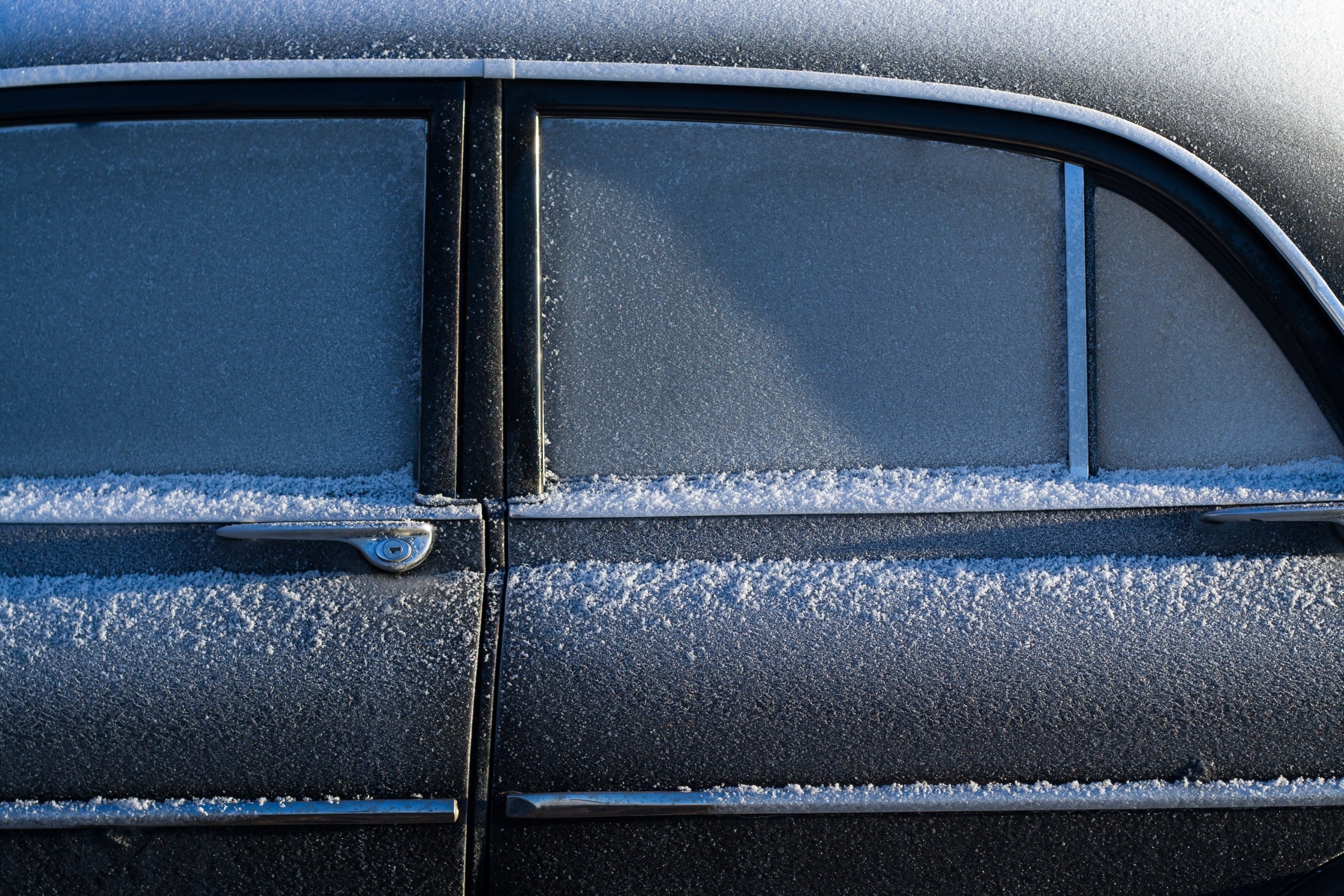Winter might just be the worst season for car-owners. Keeping an eye peeled for icy roads and other hazards is just part of it. There’s also the daily nightmare of trying to defrost your car windows — especially when you’re in a hurry. To make things easier on you (and your schedule) we’ve brought together everything you’ll need to know about defrosting your car windows below. You can also check out our winter weather car hacks to help you get through this winter season.
How to defrost your car windows
The simplest way to defrost your car windows involves turning on your defroster or your car’s maximum heat and directing it at the windshield. Depending on the amount of frost on your windshield, this method can take some time, so consider combining it with the techniques below.
Ice Scraper
An ice scraper is highly effective at removing frost from the outside of your windshield — but just a heads up, if you’re not wearing any gloves your hands might get a little frosty themselves!
Rubbing Alcohol
Rubbing alcohol works by decreasing the melting point of ice. Grab a spare spray bottle and mix equal parts water and rubbing alcohol (note you don’t need to fill the spray bottle up). Then spray your windshield and wait a few minutes for the frost to loosen.
Salt
Salt works the same way as rubbing alcohol, helping to lower the melting point of ice. Pour a generous amount of salt on your windshield and wait a few minutes for the ice to melt. The only downside is you’ll probably have to wash some salt stains off your windshield eventually.
Warm Water
Whatever you do, don’t pour boiling water on your windshield, as it can lead to cracks and serious damage. Using lukewarm water is a little bit safer, though if you can remove the frost another way we’d recommend doing that. In this method, you’ll pour a bowl of warm water over your windshield and wait for the frost to melt. 
How to prevent frost and fog
Fog on your windshield can present a number of dangers, not the least of which is visibility. To help get rid of fog that’s preventing you from seeing out of your windshield, you can:
- Turn on your defroster (more common in rear windshields).
- Turn on your windshield wipers (if the fog is on the outside of the glass).
- Crack the window to let in some fresh air, which can reduce moisture levels in your car.
- Turn on maximum heating and direct airflow to the windshield.
- Turn on maximum cooling and direct airflow to the windshield (cooler, dryer air will help remove moisture from the glass).
To prevent fog in the first place, you’ll want to make your windshield water-resistant. You can find various fog-preventing products that can be applied to your windshield; buffing a small amount of dish soap into the inside of your windshield can also help (just make sure not to wash it off). Finally, refraining from using the air recirculation feature in your car can help prevent the build-up of moisture that leads to fogging.
Defrosting Car Windows FAQ
We’ve brought together some frequently asked questions about defrosting your car windows below. For winterizing your car beforehand, we’ve found some tips as well.
What is the quickest way to defrost my car?
A popular method of quickly defrosting your car entails putting your heater on its highest setting, keeping the air conditioning on, turning recirculation off, and cracking your window a bit. Because frost and fog are the result of condensation, keeping the air in your car as dry as possible is critical to a fast defrost.
What does the defroster button look like?
The defroster button in most vehicles will look like a window with three slightly curved arrows pointing up. Some vehicles have both front and rear defrosters, in which case the button for the front windshield will look like a curved window, while the button for the back window will look like a rectangular window.
Can hot water crack my windshield?
Yes. If there are pre-existing cracks in your windshield, the sudden temperature change can cause the glass to crack or even shatter. Even very small cracks and chips that you might not be able to see can present a danger, so it’s generally a good idea to avoid this method of defrosting your windshield.

 Get it on Google Play
Get it on Google Play